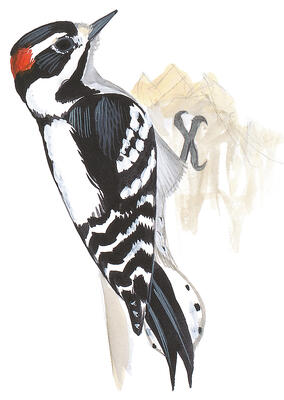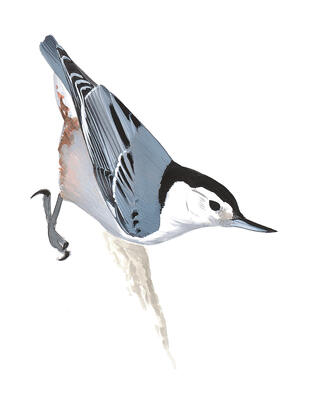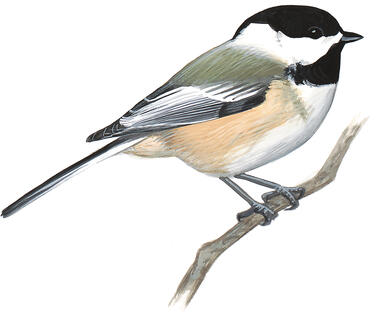Let's have a love affair with planet earth and all of it's inhabitants. Then we would never poison it with chemical fertilizers, pesticides or fracking solutions. It can be healthy using natural means. Blessings to you and all.
Total Pageviews
Thursday, December 31, 2015
Tuesday, December 29, 2015
Sunday, December 27, 2015
Going Beyond Paris or Even “Sustainability”: A Meta-Narrative for Sharing the World with Natural Systems
Going Beyond Paris or Even “Sustainability”: A Meta-Narrative for Sharing the World with Natural Systems
9 Comments

Lit by a camera-trap flash and the glow of urban Mumbai, a leopard prowls the edge of India’s Sanjay Gandhi National Park. (Photo/Steve Winter)
The Paris Climate Talks were a top-down collaboration in the global political sphere, producing a hopeful treaty to reduce carbon emissions. At this moment of global alliances, what is a bottom-up approach that rejoins humans and natural systems? Our anthropocentric mindset that de-values all other life forms, the Cartesian influence that reduces all life to functional objects or resources in the service of human goals and activities– this is the central delusion that propels us towards ecological destruction. A parallel track to the political one and equally important is reflection and deep questioning to gain a more realistic perspective of the human role in the natural world. A shift away from anthropocentrism requires a re-doing of worldview; and how we view the world speaks volumes about how we view ourselves and the intersections of Self and Other.
“Resilience” and “sustainability” are central terms and meta-narratives for imagining and creating a lighter, less destructive human footprint in the arenas of agriculture, urban planning, and elsewhere. These meta-narratives or frames help re-educate us to thinking of systems, longevity, diversity in systems, adaptability, and to ending the fallacy of endless natural resources. Yet more-than-humans are still viewed as “resources”. These terms don’t dispel that fallacy. We need another meta-narrative for creating a shared world with other species, in which others are valued and have inherent worth. To go even farther, this new narrative can highlight the view of the Self as collective, in which others are within us. Post-humanism is a movement within academia that imagines the world beyond anthropocentrism, but these ideas seldom make it to broader audiences or discussions.
Different cultural worldviews contribute to mutual thriving across species, or mutual destruction. In India, parts of Africa, sacred groves are protected due to religious significance and remain areas of high biodiversity and old growth trees. Many indigenous groups view other species as kin, and as having their own cultures. Humans and other species live in a multi-cultural world, and each deserves respect, and especially the species we choose to eat.
What sort of mindset, perspective, worldview equalizes humans and natural systems and emphasizes interconnectedness, such that both can thrive? What mindset recognizes relationships across species, instead of viewing sociality only in the human realm? And what is the appropriate language here? Conservation biologists talk of “coexistence” with elephants, wolves, other large mammals whose lives sit on the brink of extinction due to habitat loss, poaching, unwillingness to share landscapes. Is “coexistence” a term that works for re-imagining, re-building relationships to other species? The words we choose at this moment are essential.
“Coexistence” emphasizes the concept of living in parallel lines, tolerating the presence of the other. This isn’t representative of the inherent interconnectedness within systems. Millions of bacteria inhabit us in mutually beneficial arrangements that are more intertwined than “coexisting.” Half of the oxygen humans breath comes from marine phytoplankton; this is not a parallel living arrangement. Even species that don’t rely on one another for air share commonalities that connect them. Our lives are bound in a mutuality.
A mindset that emphasizes similarities of form or function across humans and non-humans is one possibility. Brazilian anthropologist Eduardo Viveiros de Castro describes an AmerIndian worldview in which animals and plants were all once human and still have a human essence, but now wear a cloak of a different kind. He applies this worldview within the discipline of anthropology for an inclusive multi-species approach. Another anthropologist Tim Ingold in Scotland, writes about “correspondence” which is an intermingling of sentience among species. Anthropologist Bruno Latour’s Actor Network Theory brings non-humans into analysis of systems as actors, agents. The field of political ecology begins to view non-humans in an equal position to humans as agents. Ecologist Ricardo Rozzi proposes we move beyond Aldo Leopold’s Land Ethic, to bio-culturalism, which “couples human habits, habitats and communities of co-inhabitatants”, or non-humans on the landscape. Rozzi explains that “ethics” comes from ethos, which originally meant “the adobe of an animal.” Our notions of ethics were originally tied to our connections to other species and their habitual ways.
The term “cohabitation” connotes sharing landscapes, sharing home, which is closer to representing interconnectedness. Cohabitation intermixes logos, mythos, and ethics, storying landscapes and seascapes again with meanings, metaphors, narratives of shared histories, shared places. Cohabitation is especially controversial when applied to large carnivores like wolves and leopards. Ecologist Sunetro Ghosal, who studies large cat conservation in India, explores cohabitation. Scientists view leopards as dependent on them to create conservation plans and understand their behavior, which may contribute less to cohabitation, to sharing landscapes than some of the tribal peoples’ views in which leopards are sacred members of their community. They know how to prevent attacks and even know individual leopards and their past experiences, which sometimes explain the reason for a violent episode. The leopards are people, of a sort.
Building relationships to other species, to natural systems is central to this inner way forward. Jane Goodall and many others in her field present how important it is become like the ones they study, to enlist their mimicry, empathy, and become the Other in a sense. The Other is also within us, as German philosopher Peter Sloterdijk explains in an alternate view of subjectivity. Our own subjectivity involves having the Other within us. We are not bounded selves, in other words, but are who we are through our relationships, interactions, and holding others within us. These ideas and ways of being need more of a spotlight, more discussion. This is a way forward, re-establishing humans as a positive force on this planet instead of destroying all life forms in our wake.
Let’s study places in the world where humans successfully cohabitate with other species.Cohabitation should be studied in academic institutions, supported with grants by large institutions, and should become a narrative we discuss and perhaps engage with. It’s more radical than coexistence or sustainability, but why not elevate values in this learning curve. Science tends to avoid values, but you can’t learn how to live with others without valuing them.
This work is licensed under a Creative Commons Attribution-Share Alike 3.0 License
Thursday, December 24, 2015
Tuesday, December 22, 2015
The First Tree Huggers

The first tree huggers were 294 men and 69 women belonging to the Bishnois branch of Hinduism, who, in 1730, died while trying to protect the trees in their village from being turned into the raw material for building a palace. They literally clung to the trees, while being slaughtered by the foresters. But their action led to a royal decree prohibiting the cutting of trees in any Bishnoi village. And now those villages are virtual wooded oases amidst an otherwise desert landscape.
Not only that, the Bishnois inspired the Chipko movement (chipko means “to cling” in Hindi) that started in the 1970s, when a group of peasant women in the Himalayan hills of northern India threw their arms around trees designated to be cut down. Within a few years, this tactic, also known as tree satyagraha, had spread across India, ultimately forcing reforms in forestry and a moratorium on tree felling in Himalayan regions.
This article is from: earthisland.org
Monday, December 21, 2015
Sunday, December 20, 2015
Saturday, December 19, 2015
Climate Change Missing Ingredient
This Is the Missing Ingredient in the Climate Change Fight

Sam Kass is a former White House chef.
Smart food policy can help us reduce emissions and eliminate waste
I recently returned home from Paris, where I participated in a number of events around the climate-change conference that used food to tell the story of climate change and highlight potential solutions. The city had the crazed but celebratory feeling of a wedding, with plenty of planning boiling down to a final, frantic push to cross the finish line. But just as marriage is only the beginning of a new kind of life, it turns out the finish line is actually the starting line—and the real work begins now.
Unfortunately, there’s no time for a honeymoon. Each nation has to figure out how it is going to fulfill its commitments, most of which focus heavily on energy—a natural choice because it’s the top contributor to greenhouse gas emissions.
But a quick look at the relationship between food and climate makes clear that we are largely overlooking the sector that holds the greatest potential to solve the problem of climate change.
There are three big reasons our plates are so important. The first is that smart food policy can have the biggest return on investment. The production of food emits 25% to 30% of global greenhouse gas emissions—it’s the second leading source. And unlike the energy sector, where rates have begun to decline, emissions in agriculture are projected to increase by 30% by 2050. The mitigation potential here is huge.
When thinking about an issue as big as agriculture, it can be daunting to decide where to start. There are two clear paths we should take: reduce the amount of food that goes to waste, and reduce the emissions from food with climate-smart agriculture.
Let’s start with food waste. Globally, we waste a third of the food we produce (in the U.S., we waste 40%). That means that nearly a third of the land we farm grows food that ends up in a dumpster instead of someone’s stomach. This waste accounts for 8% of greenhouse gas emissions, according to the U.N.’s Food and Agriculture Organization. If waste were a country, it would be the third largest emitter.
We will need specific policies and innovations to increase efficiency and help people manage their food more efficiently. Congresswoman Chellie Pingree of Maine recently proposed a smart and pragmatic bill that would go a long way towards achieving many of these goals in the U.S.
Beyond eliminating waste, expanding climate-smart agricultural practices is the way forward. Climate-smart agriculture is defined as practices that sustainably increase productivity and system resilience, while reducing and sequestering greenhouse gas emissions. We should do what it takes to help farmers incorporate these cost- and climate-saving measures. The World Bank has already committed to align all of its loans and investments towards outcomes of climate smart agriculture. The United States should do the same.
The second untapped power of the plate is that food happens to be a language everyone speaks. Using food, leaders can make the issue of climate change real, and bring urgency to a problem that has seemed, for some, quite distant. The concept of gases which none can see, a few degrees which doesn’t sounds catastrophic, glacial melts thousands of miles away have not resonated with the general public. People feel an appropriate sense of alarm when they learn that things like chocolate and coffee, wine and champagne, peanuts, shellfish and crustaceans may all be out of reach for our grandchildren because of climate change. After making a meal with these very same products for leaders last week in Paris, I can say for certain it struck a chord.
The third reason food should be our focus is because it allows everyone an opportunity to be part of the solution. Farmers don’t grow food in a vacuum; they grow food for people to eat. We will not have climate-smart agriculture if we do not have climate-smart consumption. We—as eaters—can help push farmers to transition what and how they grow.
While policy is of the utmost importance, laws won’t solve this existential problem on their own. A dramatic cultural shift is needed if we are to fully reach our goals, and the dinner table is the place start. Consumers will need to make changes to their diets. For example, livestock alone produces 18% of greenhouse gas emissions. I’m a lover of steak, but we must eat less meat, and the meat we do consume should be part of a system that sequesters carbon. Because food is one of the deepest expressions of our culture, it holds tremendous power to move our values forward.
The environmental movement needs to prioritize food far beyond what it has to-date, and do it in a way which embraces the farmer as vital partner. The food world has the opportunity to establish itself on the most important platform of our times, and in doing so become a true political force.
Until the food we eat is grown, harvested and consumed with a healthier planet in mind, we will not reach the goals outlined in Paris. Just like marriage, success must be built on commitment over the long term, continual investment and work as well as a sense of optimism
Friday, December 18, 2015
Help Feed the Birds
Help Feed the Birds With a DIY Wreath
This homemade recipe helps birds through the cold months—plus it can be a heartfelt gift for any bird lover.

By National Audubon Society
December 11, 2015Birds in This Story
Downy Woodpecker
Picoides pubescens
White-breasted Nuthatch
Sitta carolinensis
Black-capped Chickadee
Poecile atricapillus
Popular Stories
The holidays are usually a busy time in the kitchen—and birds will appreciate some home-cooked treats just as much as your friends and family. This suet bird seed wreath provides densely nutritious food for the birds that hang around in the winter. Cook one up and hang it outside (ideally either 3 feet from a window, or more than 30 feet from a window, to prevent collisions), and wait for your feathered fans to come snack. What birds should you expect? Suet is a particularly welcome feast for birds like wrens, chickadees, nuthatches, and woodpeckers.
Here's how to cook up this avian treat:
Materials:
• Bundt Pan
• Large pot
• Wide Ribbon
• 3 Block of rendered suet (available at various garden centers and home improvement stores)
• ½ cup of peanut butter
• 9 cups of bird seed
• Dried fruits and berries
Steps:
1. Over low heat, melt your three blocks of suet in the large pot. Stir consistently and make sure it does not boil.
2. Once your suet is melted, add the peanut butter and let the combined suet fully melt. Remove from heat.
3. Combine the liquid suet with the bird seed.
4. Spray the bundt pan with cooking spray and fill the bottom with berries and fruit.
5. Fill the bundt pan with the liquid suet.
6. Let sit in a cool place (like your refrigerator) overnight to harden. Once hardened, remove the mold from the pan.
7. Tie a ribbon around in order to hang and either decorate as a gift or hang outside for birds to enjoy!
Note: Do not put suet out in hot weather, as it can turn rancid. Keeping it a holiday tradition can help you remember to only hang this wreath in cool weather.
For other ways to help birds make it through the winter, check outWinterize Your Yard for Birds and Audubon Guide to Winter Bird-Feeding.
Tuesday, December 15, 2015
EPA tosses aside safety data, says Dow pesticide for GMOs won't harm people
Sunday, December 13, 2015
Thursday, December 10, 2015
Wednesday, December 9, 2015
Saturday, December 5, 2015
Friday, December 4, 2015
How To Make Vitamin C
HOW TO MAKE VITAMIN C WITH JUST ONE INGREDIENT

- Most store bought Vitamin C supplements are genetically modified. Manufacturers use genetically modified corn as one of the ingredients. Most commercial vitamin C supplements do not contain natural vitamin C. It’s often made from ascorbic acid which is a synthetic chemical derived from glucose. Ascorbic acid has been proven to destroy good bacteria in the gut and suppress the immune system.
Health Benefits of Orange Peels
- One medium orange contains over 60 flavonoids and 170 different phytonutrients.
- Orange peel improves digestion. It helps to releive gas, heartburn, vomiting and acidic eructation.
- Orange peel helps with the respiratory system; it helps eliminate cough and even can improve asthma.
- Orange peels have anti-microbial and anti-inflammatory properties. Essential oil, d-limonene, contained in orange peels has ability to promote normal liver function.
How to Make Vitamin C with Just One Ingredient
Making Vitamin C at home is super easy and won’t cost you anything.
- Take organic orange peels and cut them into strips
- Allow the peels to dry at room temperature for a couple of days until crisp
- Once dried, grind the orange strips in any grinder ( I use a coffee grinder)
- Take one teaspoon daily ( I add it into my daily smoothies)
- Be sure to store in an airtight container.
One teaspoon of powdered orange peels will provide you with more Vitamin C than your body needs.
Article originally published on LivingTraditionally.com republished with permission
Subscribe to:
Posts (Atom)
















